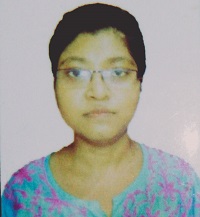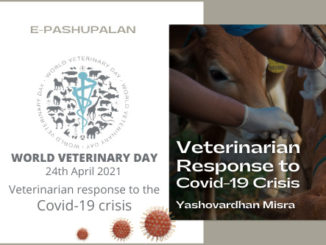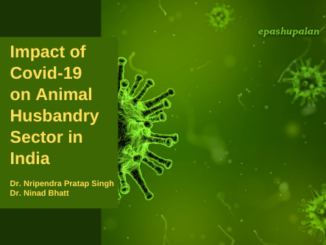Today’s veterinarians are the only doctors educated to protect the health of both animals and people. They work hard to address the health and welfare needs of every species of animal. Veterinarians also play critical roles in environmental protection, research, food safety, and public health -American Veterinary Medical Association
Veterinarians are an integral part of the global health community. The veterinary profession has been an invaluable asset in the protection of animal and human health. Beyond the activities linked to the health and welfare of animals, controlling future outbreaks of animal-borne diseases, they have an indispensable role in disease prevention and management, and to ensure food safety for the population. COVID-19 infection is a zoonosis, which crosses species barriers from animal to humans and is transmitted from person to person. In these interfaces, veterinarians can play a relevant role in the detection and prevention of new zoonoses.
How a Veterinarian can help in pandemic
Collaborating With Human Health
In this pandemic, veterinary professionals are collaborating with medical health professionals in alleviating the burden posed by the disease. Some veterinary clinics have also been contributing by providing essential materials such as personal protective equipment and ventilators to overcome their critical supply shortages. In the insufficiency of human resources, veterinarians are volunteering in hospitals and laboratories with solidarity.
Ensuring Food safety
Veterinarians ensure food safety by substantiating that only healthy animals and their products should enter the food supply chain. This also supports agricultural livelihoods and the viability of our farms.
Epidemiological Surveillance
Surveillance has become a fundamental parameter in the control of emerging zoonoses because ecological changes, molecular variations among infectious agents, and wild animal-man interactions represent the main factors for the emergence of new pathogens. Veterinarians are familiar with, and have known of, coronaviruses and related diseases for decades. In this way, these skills in the wildlife-reservoir surveillance program can be efficiently utilized for detecting emerging pathogens. Therefore, the collaboration between veterinary communities linked to the monitoring of wildlife and human medical communities is crucial in the development of preventive strategies and must follow a double direction in the provision of early and specific information.
Research
Various veterinary laboratories have used their experience and expertise in high throughput testing capacity of infectious diseases to engage in activities such as surveillance screening, by testing human samples, thereby supporting the diagnostic capacity of human health services. Veterinarians come up with innovative diagnostic tests and vaccines using animal models based on comparative medicine.
Public education and behavioral change
Veterinarians are well-versed with potential risks of zoonotic diseases placing them in an ideal position to provide pet owners with reliable information about disease prevention and to recommend appropriate preventive medication for pets to reduce potential risks.
Veterinarians educate the public about:
- Zoonotic diseases, their prevention and control strategies through clarification to the population about the risks and care to be taken in human-animal contact.
- Awareness about proper personal hygiene and farming practices.
- Information about provision of diagnostic facilities, reporting systems and medical facilities about endemic and emerging zoonoses at local and national level.
- Preventative measures, such as vaccination against diseases with a significant public health or economic impact.
Confronting Zoonoses
A combination of ecological disturbances, landscape changes, human behavior, and public health factors contributes to the frequency of contacts between humans and animals, and such contacts pose a risk of exposure to transboundary animal pathogens. Veterinarians should have significant roles in maintaining healthy ecosystems and protecting animals and humans from emerging and transboundary infections. Such roles should be based on the One Health framework, the application of which can reduce economic impacts on the livestock industry and food supply.
For this veterinarians typically apply:
- Biosecurity measures to prevent the introduction of virus into population.
- Surveillance via diagnostic testing to identify infected animals.
- Isolation/ culling of infected animals from uninfected population.
- Vaccination for long-term control by promoting immunity.
Implementation of One Health Concept
‘One health approach’ is an important concept to bring clinicians, public health workers, veterinary medicine and veterinary public health officials under one umbrella to strategize about prevention and management of zoonoses such as COVID-19.
This is particularly true as this pandemic fits into the One Health concept, which considers the interactions between humans, animals, and the environment, and recognizes that human health is closely related to animal and environmental health. Enhancement in surveillance and diagnostic systems for these infectious diseases (existing and emerging) in the developing countries including India through “one health” can reduce the risks of outbreaks. The COVID-19 control strategy requires the inter-professional collaboration between human medical and veterinary professions as inspired by the One Health approach. This pandemic impacts populations in numerous ways and reminds us that multi-sectoral collaboration, in line with the “One Health” approach, and the sharing of expertise are more important than ever.

The success in the prevention and controlling of major zoonoses depend on the ability to mobilize resources in different sectors and on coordination and intersectoral approaches, especially between national (or international) veterinary and public health services. The veterinarian must lead in research and actions that primarily involve prevention and surveillance, considering importance to public health, especially related to emerging and re-emerging zoonoses. Moreover, a stringent and multidisciplinary collaboration between veterinarians, physicians and public health professionals is needed. The veterinary and medical communities should work closely together in clinical, public health and research settings to fight against this pandemic to attain the goal of optimal health outcomes.







1 Trackback / Pingback